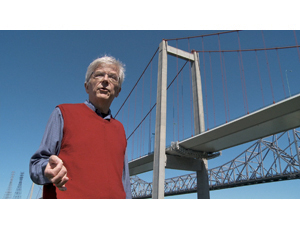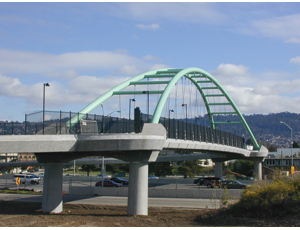

Descended from two generations of noted engineers, Mark Ketchum went on to carve his own industry career as a structural engineer, bridge design innovator, seismic expert, researcher and co-founder of OPAC Consulting Engineers, San Francisco.
He died on Feb. 24 in Berkeley, Calif. of cancer at age 60.
Ketchum got an early sense of the family business as the son and grandson of Milo Ketchum Jr. and Sr., both well-known engineering practitioners and educators in earlier eras.
But Mark Ketchum’s bridge engineering expertise developed through a long association with design innovator T.Y. Lin. “Mark naturally had the same gift as T.Y. to visualize, understand and describe the behavior of structures,” says colleague Reinhard Ludke, principal structural engineer at designer Creegan & D’Angelo.
Ketchum worked for Lin’s firm, T.Y. Lin International, on bridge engineering projects that included a seismic retrofit of the Golden Gate bridge after the 1989 Loma Prieta earthquake. In an interview, he termed it “the most comprehensive seismic evaluation of a major bridge ever performed.”
That work was almost interrupted in a later dispute between company principals and Dar Al-Handassah Consultants, to which T.Y. Lin’s employee stock ownership plan had sold the firm. It spurred Ketchum and several other principals to form OPAC, with the dispute continuing between that firm and T.Y. Lin.
Ketchum was OPAC vice president at his death.
OPAC says Ketchum “was recognized for his creative design approach, focusing on rational and constructible forms, that has produced several notable structures.” He was a design leader on the Third Carquinez Strait suspension bridge in California, completed in 2004, which was the first U.S. suspension bridge with shaft foundations and reinforced concrete towers, and the first in the state designed to strict toll bridge seismic criteria.
Ketchum also was construction engineer of record for the Hoover Dam Bypass bridge between Arizona and Nevada, finished in 2010. Other innovative designs included a pedestrian crossing of the I-80 freeway in Berkeley and the Nanning Bridge in China, which Ludke describes as an “aesthetically unique arch bridge.”
Ketchum also was a director of the Structural Engineers Association of Northern California. “Mark Ketchum was a stellar example of the best that structural engineering has to offer,” says Gregory Luth, president of Gregory P. Luth & Associates, a Santa Clara, Calif., stuctural engineer.
"Mark’s death is a sad loss for Berkeley, a city he loved, and for all those who valued the inspired aesthetic he brought to his work," said Berkeley Mayor Tom Bates in an on line tribute. "We are fortunate that his legacy remains not only in the hearts of those whose lives he touched but also in his engineering designs that help define our environment.
Bates said the city’s pedestrian bridge “has become a familiar landmark for the city and an enduring example of civic infrastructure that excels in both function and form.”
Ketchum and other OPAC engineers also co-founded an engineering website that aims to advance the knowledge and practice of civil engineering.
OPAC has set up a memorial fund that will create an internship to train engineering students.
Memorial donations can be made to:
The Mark Ketchum Memorial Fund, OPAC, 315 Bay St. 2nd Fl., San Francisco, Calif 94133.





Post a comment to this article
Report Abusive Comment